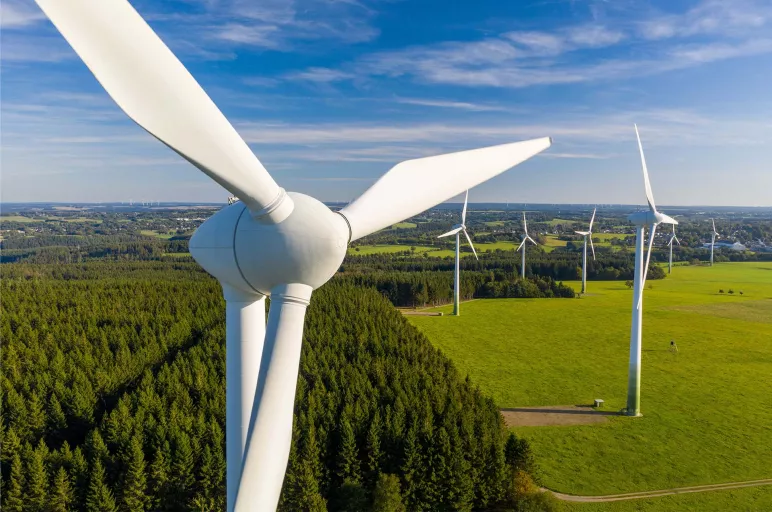
Weak Supply Chain a Barrier to Green Energy Transition
- Supply chain disruptions caused delays in the installation of clean power capacity in Q3 2022.
- Companies in the green energy sector are being hurt by macroeconomic headwinds and supply chain delays.
- Increasing costs for components, shipping delays and supply chain disruptions are slowing the transition to renewable energy.
December 13, 2022 | Supply Chain Strategy
Major economies across the globe are pushing for more renewable and green energy production as environmental issues compel countries to look for alternatives to fossil fuels. Countries such as the U.S., China and western European nations have set ambitious targets for generating electricity from renewable resources by 2030.
However, the COVID-19 pandemic as well as the current war between Russia and Ukraine have led to persistent disruptions in the supply chain. These disruptions have stalled many onshore and offshore renewable projects and made these targets difficult to achieve in the set timeline. If effective solutions to supply chain disruptions are not identified, these targets will only become more out of reach.
Less installation of clean power capacity in Q3 2022
In Q3 2022, there was a significant decline in installation of new capacity of clean energy in the U.S. As compared to Q3 2021, new clean power capacity installations declined by 22% in Q3 2022. Solar installations fell 23% compared to the same quarter in 2021, while land-based wind installations dropped 78%.
One of the major reasons for decline in new installations was supply chain challenges and the limited availability of solar panels in the market. Compared to the third quarter of 2021, land-based wind and solar additions were down 78% and 23% , respectively.

Source: Clean Power Quarterly Market Report
Inability to source solar panels was reported as the major reason for developers’ failure to increase capacity installations. Similarly, phase-down of the production tax credit (PTC) led to a slowdown in wind installations.
Renewable companies facing the brunt of weak supply chain and inflation
Market players are also having difficulty doing business in the current pessimistic macroeconomic environment. For instance, Siemens Energy announced in a press release that the company’s adjusted earnings had fallen to €379 million euros (around $393.8 million) compared to €661 million for the 2021 fiscal year.
Similarly, GE expects losses of about U.S. $2 billion in its renewable energy division this year. The major reasons for companies making losses throughout 2022 or specifically in Q3 2022 was again attributed to inflation and supply chain challenges as well as policy uncertainty following the expiry of PTCs that dented demand. With demand headwinds, the overall process of transitioning from fossil fuel to clean and renewable energy is expected to be challenging.
Project delays continue to mount
The green energy sector has been continuously witnessing project delays due to inflation as well as supply chain disruptions. About 14.2 GW of clean power capacity in the U.S. was delayed in Q3 2022, and more than half of that capacity had witnessed delays in preceding quarters of 2022.
Solar accounts for the lion’s share of delayed capacity at 63%. Land-based wind accounts for 23% of delays, with battery storage making up the remaining 14%. Primary reasons for these delayed projects range from inability to obtain panels due to trade restrictions or ongoing supply chain constraints. Procurement activity also witnessed a slowdown in Q3 2022, where companies announced only 7.2 GW of new power purchase agreements (PPAs), which is down by 31% as compared to the same period last year.
The way forward
Although the increasing cost of solar and wind energy components, shipping delays and supply chain disruptions are currently hindering the transition from fossil fuels to renewable energy, there are still ways to mitigate these challenges. Current trade barriers are preventing the usage of low-carbon technologies, ultimately slowing down the transition to clean energy. Similarly, measures to catalyze the development of a circular economy for clean energy will help extend the lifespan of materials, components and products while reducing waste, conserving resources and boosting efficiency. Drafting supportive environmental policies is another major step that will help in identifying and resolving supply chain challenges, making the transition to green energy easier.
Author: Mitesh Doshi



